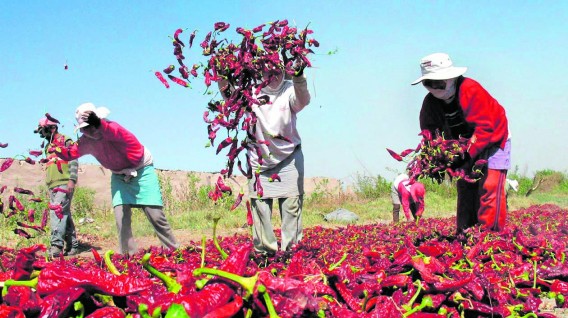In the last 10 years, the results of the Agrarian Promotion Law (Law 27360) have been positive since it has contributed to the generation of 88,738 formal jobs in the agricultural and agribusiness sectors, as well as the creation of 18,350 companies, he reported. the Institute of Economics and Business Development (IEDEP) of the Lima Chamber of Commerce.
The aforementioned law was implemented in 2001 with the objective of promoting investment and development of the agricultural sector. Later, in 2008, agroindustrial activity was incorporated into said law.
“Due to its great contribution to economic activity, it is expected that the aforementioned law will be expanded for the next 20 years and even, due to its positive results, it will become permanent,” said César Peñaranda, executive director of the IEDEP of the CCL.
Regarding the creation of companies, there is a clear upward trend in the agricultural sector, creating an average of 1,586 productive units per year. Between 2007 and 2017, the number went from 1,105 to 1,844 companies.
Similar results are observed in the agribusiness sector, where an average of 82 companies were created per year and the flow of new companies increased from 73 (2007) to 82 (2017). Even in 2012 there were more than one hundred companies. The mortality in this sector was 29 companies per year.
Regarding the regions, Arequipa is the one with the greatest dynamism in the creation of agricultural companies with 1,561 productive units, followed by San Martín (1,513) and Cajamarca (1,414). Meanwhile, for agribusiness, Piura (271), Tacna (117) and Arequipa (72) stand out.
Labor income
Although the Agrarian Promotion Law has promoted formal employment and the establishment of companies, it has also had a positive impact on labor income where it is observed that the average income of the agricultural sector grew by 76.7%, while in the agribusiness sector it expanded by 30.2% during the analysis period.
The average income in the agricultural sector is S/1,318, 128% higher than the income in the informal sector. The same happens in the agribusiness, where the income of S/1,710 exceeds the income of the informal sector by 67.8%.
Likewise, with the law, the economic activity of the agricultural sector and the agribusiness sector grew at an average annual rate of 3.4 and 3.8%, respectively, accumulating an expansion of 39.4% for the agricultural sector and 45.4% for the agribusiness sector in the decade.
Contributed to reducing poverty
The law has also influenced the reduction of poverty in rural areas since the agricultural and agroindustry sectors achieved greater development and formalization. Rural poverty fell from 74% in 2007 to 15.1% in 2017. Similar results are observed in extreme rural poverty, which contracted from 11.2% to 3.8% between the same years.
Exports
On the other hand, both the agricultural and agroindustrial sectors are an important source of foreign currency thanks to exports. In the period 2000-2017, total agricultural exports multiplied nine times, growing at an average annual rate of 14% until reaching US$5,933 million.
“This progress is mainly explained by the growing contribution of non-traditional agricultural exports, whose participation increased by 25 percentage points compared to the year 2000,” commented economist Peñaranda.
Non-traditional agricultural shipments multiplied 13 times, growing at an average annual rate of 16.3% until reaching US$5,114 million. It is worth mentioning that the main destinations for agricultural and agro-industrial exports are the US, Netherlands, Spain, the United Kingdom, Ecuador and Chile.

